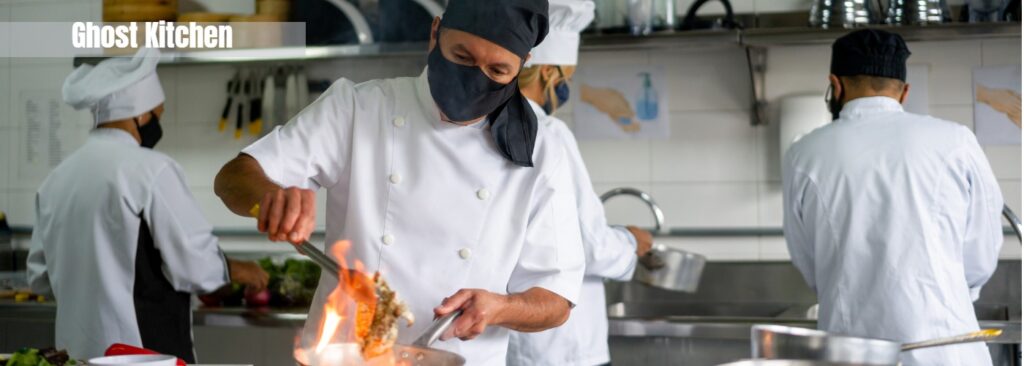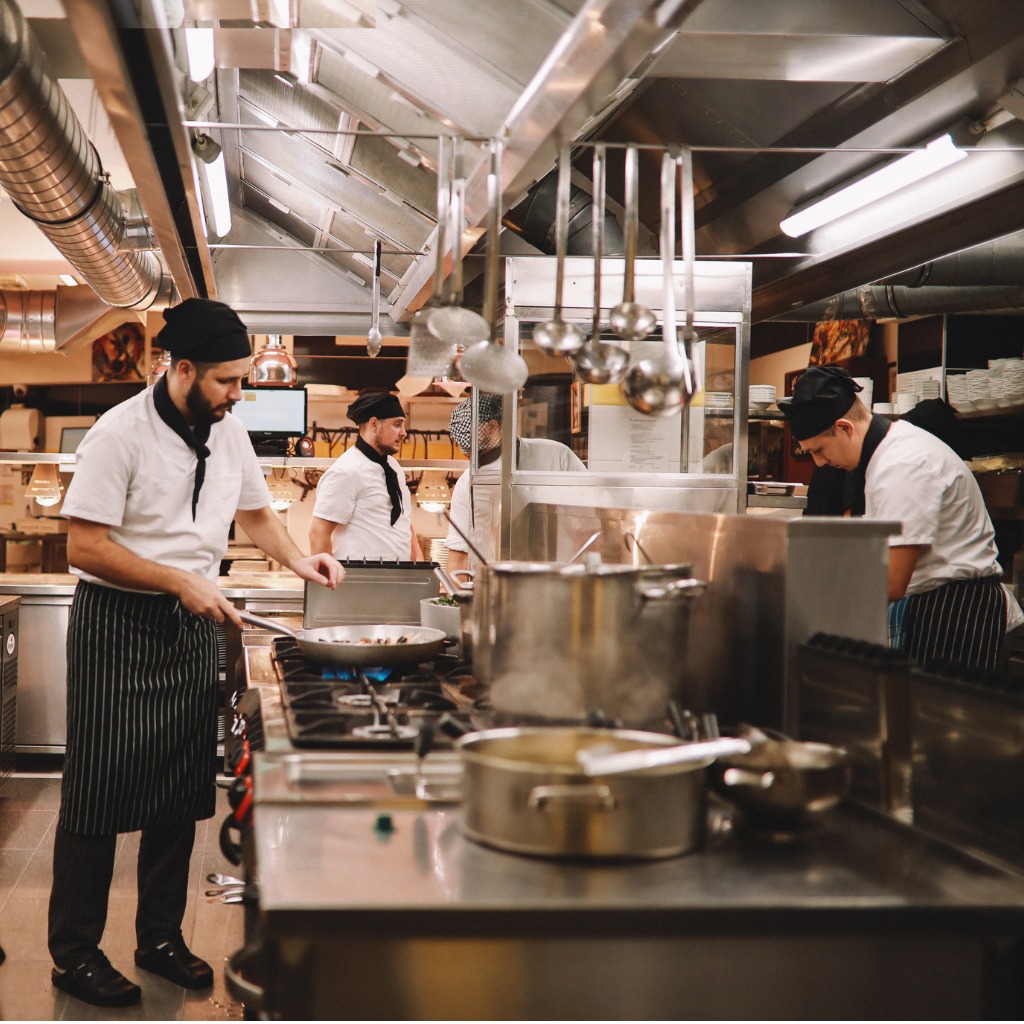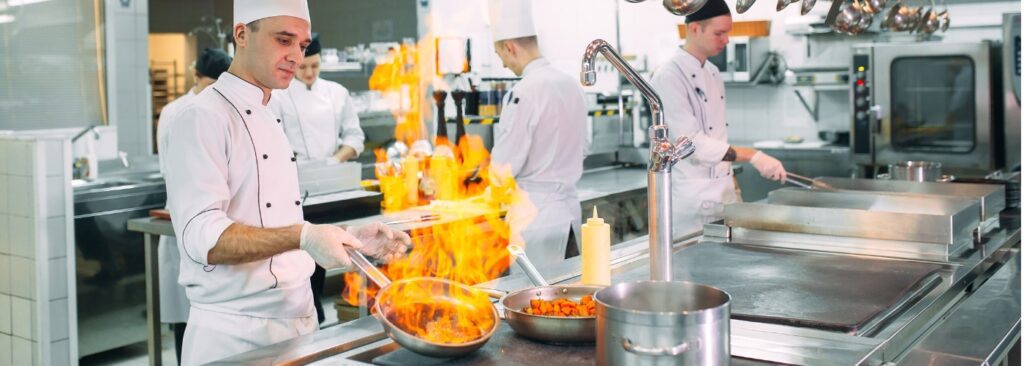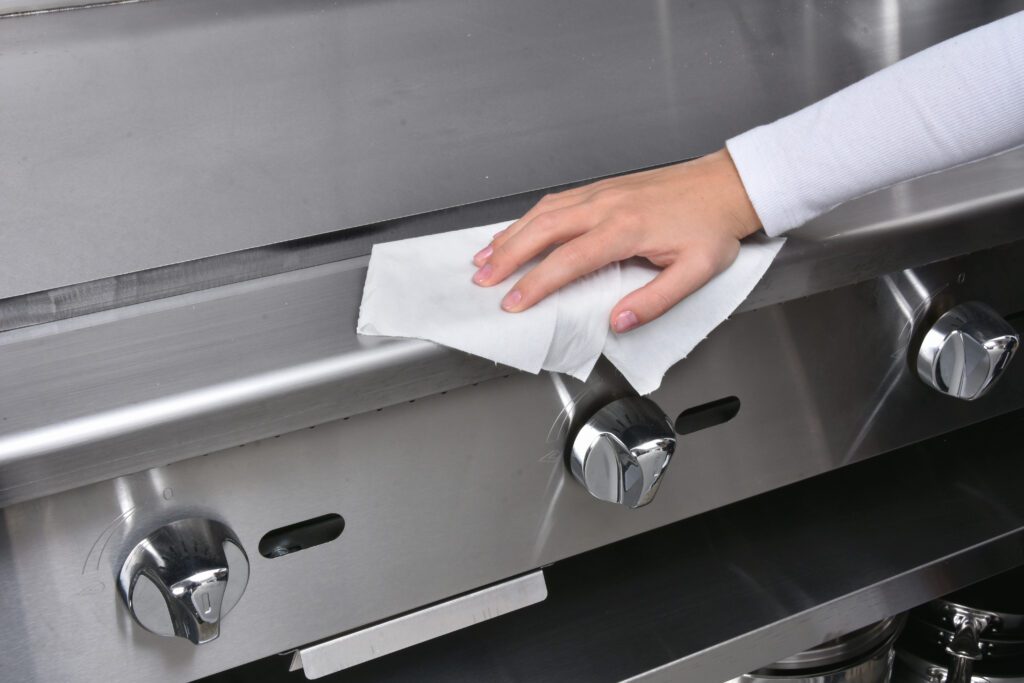
While the ongoing COVID-19 pandemic has affected businesses in virtually every sector, the restaurant industry has felt its impacts harder than most. According to a study from the National Restaurant Association, more than 110,000 eating and drinking establishments closed in 2020 (temporarily or permanently), 2.5 million restaurant industry jobs were lost, and projected sales were about $240 billion less than expected. With changing guidance from health authorities, local mandates and regulations, and shifts in consumer behavior, restaurants have had to reinvent themselves and adapt to survive. One of the most popular and successful solutions is the use of a ghost kitchen – a relatively new trend that continues to gain traction as the pandemic evolves.
What Is a Ghost Kitchen?
A ghost kitchen — also called a virtual kitchen, shadow or dark kitchen, or delivery-only restaurant — is a cooking and food preparation facility that does not have a store-front or dine-in services, instead only offers delivery or take-out. They can also be used for multiple brands that share the space and kitchen operations, and often work with third-party food delivery services such as DoorDash, Grubhub, or Uber Eats.
The Emergence and Take-off of Ghosts Kitchens

When the existence of ghost kitchens first emerged in the early 2000s, they came under scrutiny as some were illegally operating with unregistered names and false addresses to skirt health regulators. Since then, the popularity and use of ghost kitchens have taken off, as more and more restaurants look to find ways to increase food production and sales without physically growing their spaces.
In 2020, when the pandemic caused widespread restaurant shutdowns, there was, not surprisingly, a surge in deliveries and takeout. To meet this demand, many restaurants began outsourcing the making of their takeout and delivery of meals using various types of off-premises kitchens. Online ordering and apps, and the growth of third-party delivery services, have also made it easier for customers to forego a trip to the restaurant and eat in the comfort of home.
Ghost Kitchen Formats
There are several different ways that ghost kitchens can be structured and operated, including:
- Commercial Kitchens: A commercial kitchen is a dedicated space where food is prepared and cooked for delivery or takeout. The space is not shared with other businesses and there is no dining area for customers.
- Commissary Kitchens: A commissary kitchen is a professional, fully stocked food preparation space that can be rented out and shared with other businesses.
- Dual-Brand Kitchens: A dual-brand option is where existing brick-and-mortar restaurants add a separate or related food brand that operates out of its current kitchen facility. The original restaurant continues to run as usual, with the new brand only providing delivery or takeout.
- Kitchen Pods: Kitchen pods are cooking facilities housed in portable spaces, often shipping containers or food trucks. Pods are usually small but offer convenience and portability.
- Pop-up Kitchens: Also known as incubator kitchens, pop-up kitchens are existing restaurants that rent out their kitchens wholly or share space with delivery-only restaurants.
All ghost kitchen options provide a degree of flexibility and freedom for restaurants, allowing them to scale food production with potential cost savings.
Benefits of the Ghost Kitchen Model
There is a good reason why this model is gaining traction in the industry today. Some of the primary benefits of using a ghost kitchen model include:
- Financial Savings: The first reason is the bottom line — ghost kitchens help save money. Cost savings can include lower overhead, less space, smaller staff levels, and lower real-estate or rental costs due to the ability to operate in less expensive locations.
- Market Testing: Ghost kitchens make it easier to test the waters in new markets, including new geographic locations and different kinds of cuisine. A restaurant can test new products, learn what works well, and get valuable customer feedback.
- Wider Market: Because the business is delivery-based, establishments have the chance to reach a wider audience that would be largely inaccessible with normal brick-and-mortar locations. Online ordering can expand a brand’s footprint to other geographic regions and marketplaces.
- Adaptability: A ghost kitchen allows brands to be more flexible to respond to changes in the market. This includes shifts in consumer behavior and current events or health threats, such as COVID-19 variants and other outbreaks.
- Health and Safety: Although a ghost kitchen must still maintain high standards for health and safety and follow safety regulations, they are only focused on the back of the house. Without the highly trafficked dining area, there can be more focus on keeping the kitchen clean and organized and adhering to food safety best practices.
Understanding the benefits of a ghost kitchen is important, however, a restaurant manager or owner must consider multiple factors and still create a comprehensive strategy and plan before jumping in.

How to Start a Ghost Kitchen
If you are considering opening your ghost kitchen, there are several key steps and processes to follow for best practices.
- Research: As with any important business change or venture, thorough research is paramount. Key areas to examine include the current state of the market, the competition, geographic characteristics, and customer demographics, tastes and behaviors.
- Create a Plan and Strategy: Build on the research you conducted and create long-term and short-term plans for launch. Important tactics, including crafting your cuisine and brand positioning, analyzing how you will be different from competitors, and starting work on the menu, logo, and branding, are all key steps to getting started.
- Find a Kitchen: Decide what type of ghost kitchen you want to use – whether it’s creating your own ghost kitchen or working with an existing one — and begin a search of what’s available to best meet your needs. This can be a critical and time-consuming process but will get you started on the right path if it’s done carefully and thoughtfully.
- Determine Delivery Method: Analyzing options and deciding on how you will get your food to your customers is crucial in building your ghost kitchen business. Will you only offer delivery, or will you do takeout too? Will you find and hire your own delivery workers, go through a third-party service, or take a hybrid approach? There are pros and cons for all options so take the time to determine what is best for your business.
- Get Up to Code: Before you start serving food, make sure your business is completely up to code, including proper licensing, food and safety training, insurance needs, and adherence to local laws and codes.
- Staff Up and Stock Up: Finding the right people to help run your kitchen, including cooking and cleaning teams, is key. You will also need to plan out purchasing and storage of supplies, including ingredients, containers, and cleaning supplies.
- Kick-off Marketing: When everything is ready to go, start marketing your business. Get the word out using all the promotional vehicles available, including building a website, creating social media profiles and campaigns, and networking with others online and in-person to increase awareness of your brand. Traditional marketing strategies, such as advertising, direct mail, and offering coupons and discounts, may also attract attention to jumpstart your business.
- Refine: As you begin operations, continually refine your business. Get feedback from your customers, try new things, and always look for ways you can improve.
Food Safety in Ghost Kitchens
Even before the COVID-19 pandemic, keeping a restaurant clean and safe for guests and staff remains integral to its success. Food safety is just as important in a ghost kitchen as it is in a brick-and-mortar restaurant. A restaurant must be up to date on all guidelines, rules, and local codes and create a full cleaning and disinfecting process. Keeping a clean and safe kitchen requires trained staff, the right cleaning supplies, and strict monitoring. In a smaller space like a ghost kitchen, it may be beneficial and more practical to have convenient disinfecting wipes and sanitizing wipes on hand for easy and quick clean up.

Continued Growth for Ghost Kitchens
Although the pandemic did not create the concept of ghost kitchens, it most certainly has accelerated their growth. With consumers still hesitant about indoor dining, food delivery and takeout are expected to continue to increase across the restaurant industry. By 2024, the online food delivery market is projected to reach $97 billion in the U.S. alone. Further, recent data places the global value of the ghost kitchen market at $43 billion, with projections of continued growth in the coming years. Ultimately, ghost kitchens aren’t just a fad or hurried response to the pandemic. They represent a significant shift in how customers want to purchase and consume their food, and how the restaurant industry is adapting to meet the demand. And this shift is here to stay.

